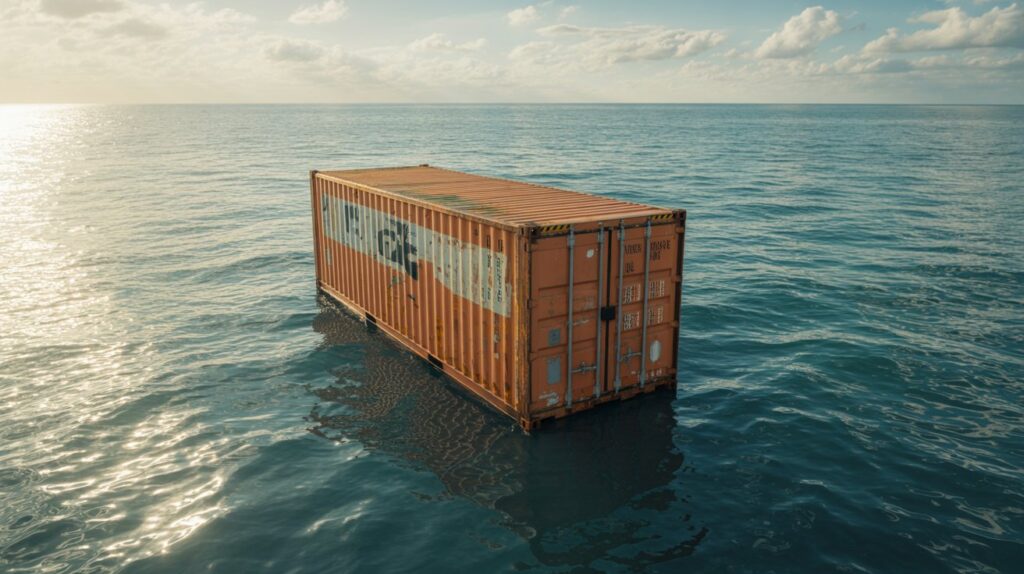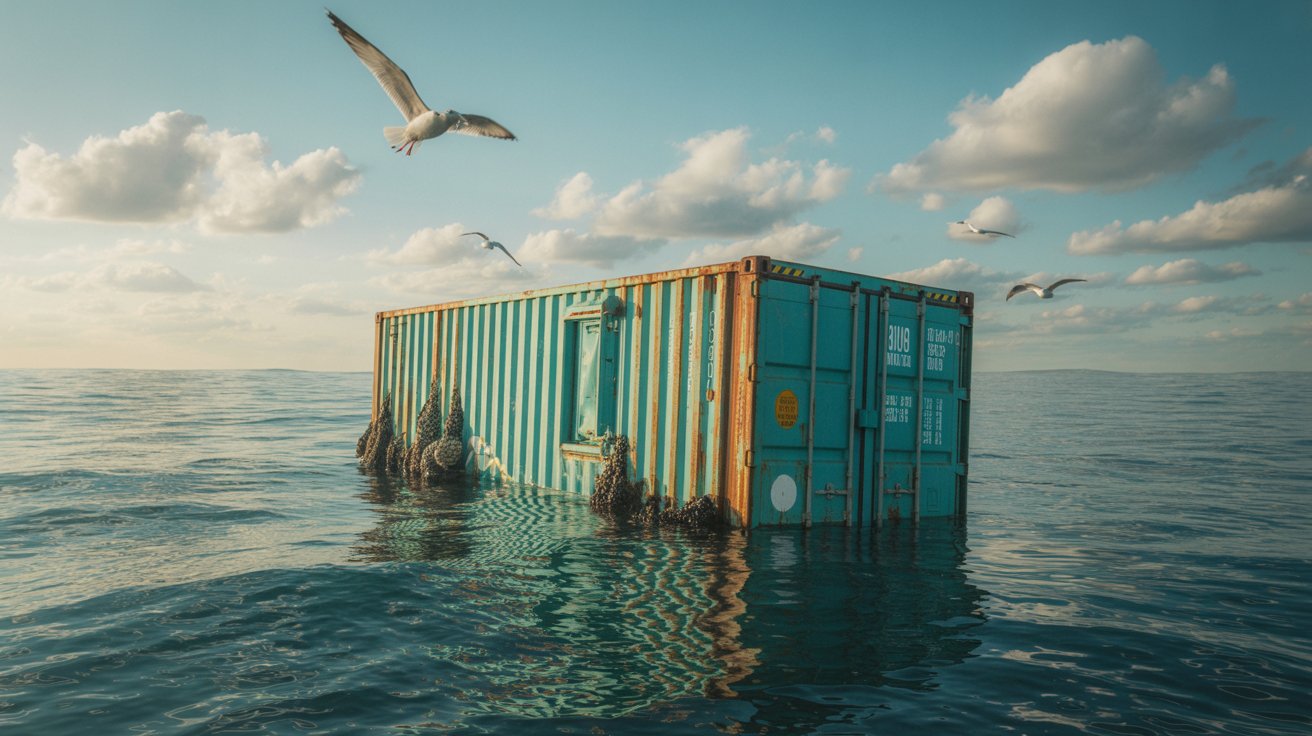Have you ever wondered why massive shipping containers float effortlessly on water? It’s fascinating how these enormous metal boxes seem to defy logic and physics. In a world where goods crisscross oceans to reach various corners of the globe, understanding the principles that allow shipping containers to float is both intriguing and enlightening.
The Basics of Buoyancy
Before diving into the specifics of shipping containers, it’s essential to grasp the fundamental concept of buoyancy. Buoyancy is the principle that determines whether an object will sink or float in a fluid. It all starts with Archimedes’ Principle, named after the ancient Greek mathematician.
Archimedes’ Principle
Archimedes’ Principle states that an object submerged in a fluid is buoyed up by a force equal to the weight of the fluid it displaces. In simpler terms, if the weight of the water displaced by the object is greater than the weight of the object itself, it will float. This principle is the cornerstone of understanding why objects like shipping containers float.
Imagine a container weighed down on the ocean’s surface. If it can displace enough water to counteract its weight, it will remain afloat. If not, it may sink. Utilizing this principle, designers ensure that shipping containers remain buoyant even when loaded with goods.
Structure and Design of Shipping Containers
Shipping containers are marvels of engineering, designed to maximize space, durability, and buoyancy. Let’s explore the features that enable them to float.
Materials Used in Shipping Containers
Most shipping containers are constructed from corten steel, a highly durable material that can withstand the harsh conditions at sea. While steel is dense and heavy, the way it is used in constructing containers allows them to displace significant water volumes, enabling them to float.
Design Elements
The design of a shipping container is integral to its ability to stay afloat. Containers are typically made with a hollow structure, which contributes significantly to their buoyancy. This design helps displace enough water to keep the container afloat, even when partially filled with goods.
Moreover, securely sealed doors prevent water ingress, ensuring that the interior space remains airtight and watertight. If the structure were compromised, water could enter, increasing the weight of the container and potentially causing it to sink.
Distribution of Weight
The manner in which goods are loaded into shipping containers also plays a crucial role in buoyancy. Careful weight distribution ensures the container remains stable during transit. Uneven weight distribution can cause a container to tilt, which could potentially lead to submersion.
The Role of Watercraft in Container Stability
While containers themselves are built to float, it is the vessels that carry them that primarily ensure their safe transport across oceans.
Cargo Ships: The Giants of the Sea
Cargo ships are meticulously designed to carry these containers. They possess immense displacement, ensuring they remain buoyant even when loaded with thousands of containers. These vessels have specialized compartments and systems to secure containers firmly in place, preventing them from sliding overboard during tumultuous weather.
Ballast Systems
Ships are equipped with ballast systems to maintain balance and stability. By adjusting the ballast—essentially tanks that are filled with water—they can ensure the ship sits correctly in the water, optimizing the conditions for both the ship and the containers it carries.
Factors Affecting Container Buoyancy
Several factors can influence whether a shipping container maintains its buoyancy while traversing the seas.
Load Weight and Distribution
As mentioned, how a container is loaded is crucial. An overloaded or improperly balanced container poses a significant risk of capsizing or sinking, especially if combined with adverse sea conditions.
Sea Conditions
Rough seas, strong currents, and high winds can all impact a container’s buoyancy. Vessels must be adeptly navigated and stabilized to ensure containers remain secure. Advanced navigation systems aid in this regard, providing real-time data that helps ships adjust to sea conditions.
Container Integrity
Maintaining the structural integrity of a shipping container is crucial for buoyancy. Rust, physical damage, or faulty seals increase the likelihood of water ingress. Regular inspections and maintenance are vital for ensuring containers remain in prime condition for floating.
Environmental Factors
The salinity and temperature of the water can also affect buoyancy. In saltwater, objects float more easily than in freshwater due to higher density. Temperature changes may also slightly affect water density, thus influencing buoyancy.

Innovations in Shipping Container Design
The shipping industry is continuously evolving to create more efficient and reliable containers that can withstand the challenges of ocean transport.
Eco-Friendly Materials
Many companies are exploring alternative materials that can enhance the buoyancy of shipping containers while being environmentally conscious. Composites and recycled materials are being integrated into new designs.
Smart Containers
Technology is making its way into the shipping industry with the advent of smart containers. These containers come equipped with sensors that monitor internal conditions, allowing for better management of weight distribution and container integrity. This technology ensures containers remain buoyant and their contents safe.
Modular Container Construction
New designs focus on modular construction, allowing containers to be more versatile and easier to repair, thereby maintaining their ability to float. These innovations also ensure they are better suited for efficient packing and unpacking.
Safety Measures in Container Transport
Ensuring the safety of containers at sea is paramount. Numerous strategies and technologies are used to minimize risks.
Rigorous Inspections
Regular inspections form the backbone of maintaining container safety. Checking for structural integrity, rust, door seals, and securing mechanisms helps identify potential issues before they result in aquatic disasters.
Training for Crews
Comprehensive training programs for crew members focus on safe loading, secure lashing, and emergency preparedness. Understanding how to respond to precarious situations, such as a container filling with water, is critical for maintaining buoyancy and preventing loss.
Technological Systems
Vessels equipped with advanced technological systems aid in the safety of containers. These systems offer real-time monitoring of container conditions, sea state, and navigational data, allowing crews to make informed decisions to protect the cargo.
Understanding Potential Risks
While shipping is one of the most efficient means of transporting goods, it is not without risks.
Capsizing and Sinking
Though rare, incidents of containers capsizing or sinking do occur. Such events are typically due to severe weather, improper loading, or structural failings. The shipping industry constantly works to mitigate these risks through improved technology and better practices.
Environmental Concerns
Shipping containers lost at sea can pose significant environmental hazards. They may drift for long periods, posing threats to marine life and ecosystems. Efforts to locate and retrieve lost containers are increasingly part of environmental preservation strategies.
The Importance of Shipping Containers
Shipping containers are more than mere metal boxes; they are a testament to human ingenuity in global trade.
Revolutionizing Global Trade
Containers have revolutionized how goods move across the globe. They ensure efficiency, safety, and cost-effectiveness in transporting vast quantities of goods, contributing significantly to globalization and international commerce.
Future Directions
The future of shipping containers looks promising, with ongoing innovations aiming to enhance their buoyancy, safety, and environmental footprint. As technology progresses, expect to see continued improvements that promise greater efficacy in maritime transport.
In conclusion, the principles governing why shipping containers float are based on fundamental physics concepts and sophisticated engineering. The next time you watch a colossal cargo ship heading out to sea laden with containers, you can appreciate the intricate science and engineering efforts keeping those metal boxes afloat, safely delivering goods across vast stretches of ocean. Through a blend of timeless principles and modern advancements, the shipping industry continues to bolster global trade efficiently.

